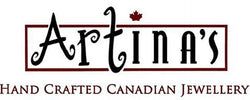FEATHER SYMBOLIZES: COMMUNICATION, HEALING, AND HOSPITALITY

Feathers are used in many ceremonies and are symbolic of supernatural powers. The most common feather in Indigenous art is the Eagle feather. The middle part of the feather symbolizes one’s life path. Every branch symbolizes the different paths and choices we have to make. All the choices are attached to the main path we take. In Pacific Northwest Coast Indigenous art, feathers often use a split u-form. Today, many artists like to experiment with the design of their feathers, sometimes opting for a more “life-like” depiction or will even depict other bird feathers like the Heron or Raven. Feathers often symbolize communication, healing, and hospitality.
Typically, Eagle feathers would be used as a welcoming gift for an honored guest. Eagle down would be displayed for the honored guest. In some groups, a feather may be used as a talking stick. A talking stick is used in ceremonies and is the property of the chief. A speaker would stand beside the chief while holding the talking stick or feather when it was their turn to speak.

Feathers are also useful tools for shamans as they allowed the shaman to obtain the knowledge of flight. Shamans would use both Eagle and Swan down during healing rituals. Today, turkey feathers are commonly used in rituals instead. In Canada, eagles and other migratory birds are protected under the Migratory Birds Convention Act, 1994. This law states that people may not legally possess eagle feathers even if the person “found” a feather on the ground. In recent years, Indigenous elders and activists have fought to use and gift eagle feathers for cultural purposes.
30 products































